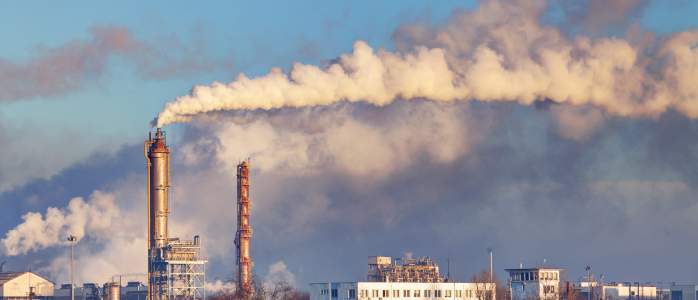



Ever since Shri Dharmendra Pradhan, Minister of Petroleum and Natural Gas announced India’s target to achieve “15 per cent natural gas in the primary energy mix by 2030” (PIB 2017), the fuel has become a big-bet for the Indian economy. These numbers changed national expectations from the gas sector and hinted at multiple reforms in the road to achieving a more sustainable energy future.
At the recent edition of ‘CERAWeek India Energy Forum (26-28 October 2020)’ multiple discussions around India’s long-term natural gas outlook showcased its relevance to the global economy. Infrastructure developments, low gas prices, and market reforms offer great potential for natural gas uptake across sectors. However, there are multiple uncertainties associated with natural gas, which need detailed exploration before giving full throttle to its adoption.
Reduced barriers herald new opportunities for natural gas
The long-standing barriers of inadequate infrastructure and high gas prices are fading away with increasingly determined efforts by actors across the value chain to move to a natural gas economy. Multi-billion investments towards ‘One Nation One Gas Grid’ indicate India’s commitment to building a gas-based economy (MOPNG 2020). Historically, countries have faced high gas prices. Still, a paradigm shift towards lower prices is now being observed with the USA’s shale gas discovery and the corresponding global supply glut. In late 2019, the liquefied natural gas (LNG) price became as low as 2-3 USD/MMBtu (Jaganathan 2020; Kanoi and Abreu 2020) from 10-12 USD/MMBtu in 2012-13 (Deb and Shabaneh 2019). These lowered LNG prices, especially for the spot, have triggered a row of beneficial renegotiations in India’s long-term contracts with other countries.
The government is also pushing for multiple market reforms to facilitate transparency in pricing and to provide a levelised field for competitive adoption across natural gas consumer sectors. The recently launched India Gas Exchange and the proposed unified pipeline tariff system are intended to make the gas market open for constructive competitiveness. Additionally, India’s effort to diversify import sources of natural gas while strengthening existing bilateral energy partnerships is a strategic move to reduce geopolitical vulnerability associated with gas to strengthen our energy security.
Understanding uncertainties and opportunities
With natural gas adoption receiving increased attention, this is perhaps the right time for India to pause and examine the long-term implications of being a gas-based economy. Though International Energy Agency (IEA) and BP Statistics projected a limited share (6-8 per cent by 2030) of natural gas in the Indian economy (BP 2019; IEA 2018) and Chaturvedi, Nagar Koti and Chordia (2018) projected limited share of gas (3-6 per cent) in the electricity generation sector too, it could be expected to be higher given the growing infrastructure and low gas price.It remains to be seen how much the low gas prices would contribute to achieving the target of 15 per cent natural gas in the primary energy basket. Further, what a gas-based economy could offer in terms of jobs, growth, and sustainability, in the post-lockdown recovery period also needs to be explored.
High demand for natural gas would necessitate commensurate expansion of the country’s gas infrastructure. And, with it will come an increase in employment opportunities. But, as natural gas would displace other fuels, it could trigger job losses in their respective value chains. Energy security linked to higher import bills and geopolitical dependence is a matter of concern for India. While helping to reduce oil import bills, a high natural gas penetration could also increase import expenses. With increased natural gas penetration in its energy mix, India would also have to take a position in the global debate on the value of natural gas in deep decarbonisation. Natural gas is a ‘bridge or transition fuel’ derived from a fossil base. Its increased share in the primary energy mix may not be conducive to India’s long-term deep decarbonisation strategy, and this infrastructure may end-up being stranded assets and investment.
To inform the direction and quantum of India’s natural gas adoption, researchers at CEEW in association with IIM-Sambalpur are exploring the implications of being a gas-based economy. The research aims to highlight and address uncertainties behind every opportunity that a high natural gas penetration scenario presents for India in the long-term.
Ankur Malyan is a Research Analyst at the Council on Energy, Environment and Water (CEEW). Send your comments to [email protected]
References
BP. 2019. "BP Energy Outlook – 2019. Insights from the Evolving transition scenario – India."
https://www.bp.com/content/dam/bp/business-sites/en/global/corporate/pdfs/energy-economics/energy-outlook/bp-energy-outlook-2019-country-insight-india.pdf.
Chaturvedi, Vaibhav, Poonam Nagar Koti, and Anjali Ramakrishnan Chordia. 2018. Sustainable Development, Uncertainties, and India’s Climate Policy - Pathways towards Nationally Determined Contribution and Mid-Century Strategy. New Delhi: Council on Energy, Environment and Water (CEEW).
Deb, Kaushik , and Rami Shabaneh. 2019. India’s Push to Renegotiate Long-Term LNG Contracts. KAPSARC.
IEA. 2018. World Energy Outlook, New Policy Scenario. Data Set, International Energy Agency.
Jaganathan, Jessica . 2020. GLOBAL LNG-Asian LNG prices fall to $2.70/mmBtu amid coronavirus outbreak. Feb 14. Accessed Nov 04, 2020.
https://www.reuters.com/article/global-lng/global-lng-asian-lng-prices-fall-to-2-70-mmbtu-amid-coronavirus-outbreak-idUSL4N2AE2BM.
Kanoi, Srijan , and Abache Abreu. 2020. India lockdown: Asia spot LNG prices under pressure amid lockdown, Adani force majeure. March 25. Accessed June 15, 2020.
https://www.spglobal.com/platts/en/market-insights/latest-news/natural-gas/032520-india-lockdown-asia-spot-lng-prices-under-pressure-adani-force-majeure.
MOPNG. 2020. Future of India's energy sector will be driven by new investments. Feb 15. Accessed July 15, 2020.https://pib.gov.in/PressReleaseIframePage.aspx?PRID=1603308.
PIB. 2017. Text of Speech of Minister of Petroleum and Natural Gas Shri Dharmendra Pradhan at the Plenary Session of 7th Asian Ministerial Energy Roundtable in Bangkok. November 02. Accessed May 04, 2020. https://pib.gov.in/newsite/PrintRelease.aspx?relid=173167.






Add new comment